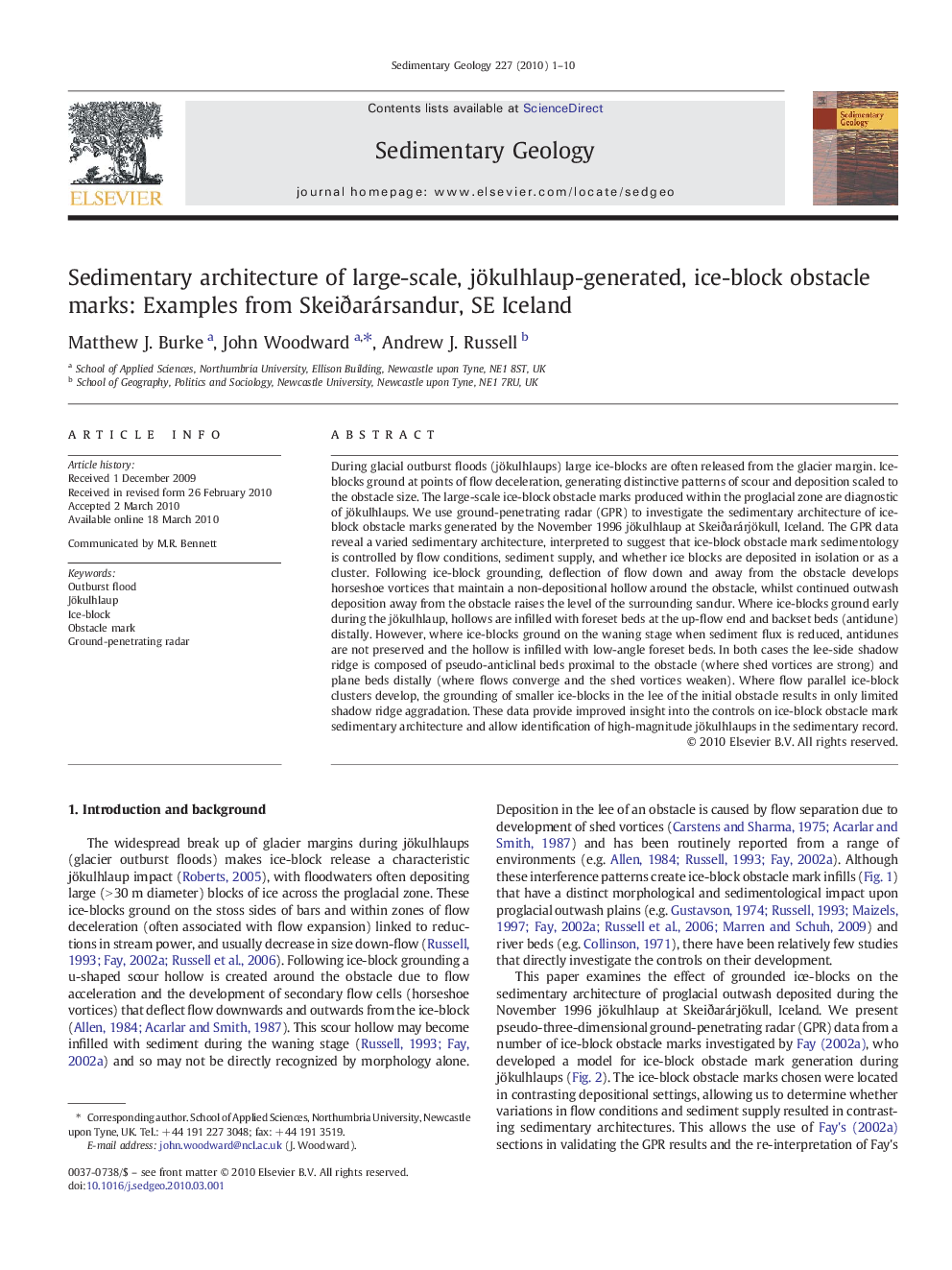| کد مقاله | کد نشریه | سال انتشار | مقاله انگلیسی | نسخه تمام متن |
|---|---|---|---|---|
| 4690291 | 1636125 | 2010 | 10 صفحه PDF | دانلود رایگان |

During glacial outburst floods (jökulhlaups) large ice-blocks are often released from the glacier margin. Ice-blocks ground at points of flow deceleration, generating distinctive patterns of scour and deposition scaled to the obstacle size. The large-scale ice-block obstacle marks produced within the proglacial zone are diagnostic of jökulhlaups. We use ground-penetrating radar (GPR) to investigate the sedimentary architecture of ice-block obstacle marks generated by the November 1996 jökulhlaup at Skeiðarárjökull, Iceland. The GPR data reveal a varied sedimentary architecture, interpreted to suggest that ice-block obstacle mark sedimentology is controlled by flow conditions, sediment supply, and whether ice blocks are deposited in isolation or as a cluster. Following ice-block grounding, deflection of flow down and away from the obstacle develops horseshoe vortices that maintain a non-depositional hollow around the obstacle, whilst continued outwash deposition away from the obstacle raises the level of the surrounding sandur. Where ice-blocks ground early during the jökulhlaup, hollows are infilled with foreset beds at the up-flow end and backset beds (antidune) distally. However, where ice-blocks ground on the waning stage when sediment flux is reduced, antidunes are not preserved and the hollow is infilled with low-angle foreset beds. In both cases the lee-side shadow ridge is composed of pseudo-anticlinal beds proximal to the obstacle (where shed vortices are strong) and plane beds distally (where flows converge and the shed vortices weaken). Where flow parallel ice-block clusters develop, the grounding of smaller ice-blocks in the lee of the initial obstacle results in only limited shadow ridge aggradation. These data provide improved insight into the controls on ice-block obstacle mark sedimentary architecture and allow identification of high-magnitude jökulhlaups in the sedimentary record.
Journal: Sedimentary Geology - Volume 227, Issues 1–4, 1 May 2010, Pages 1–10